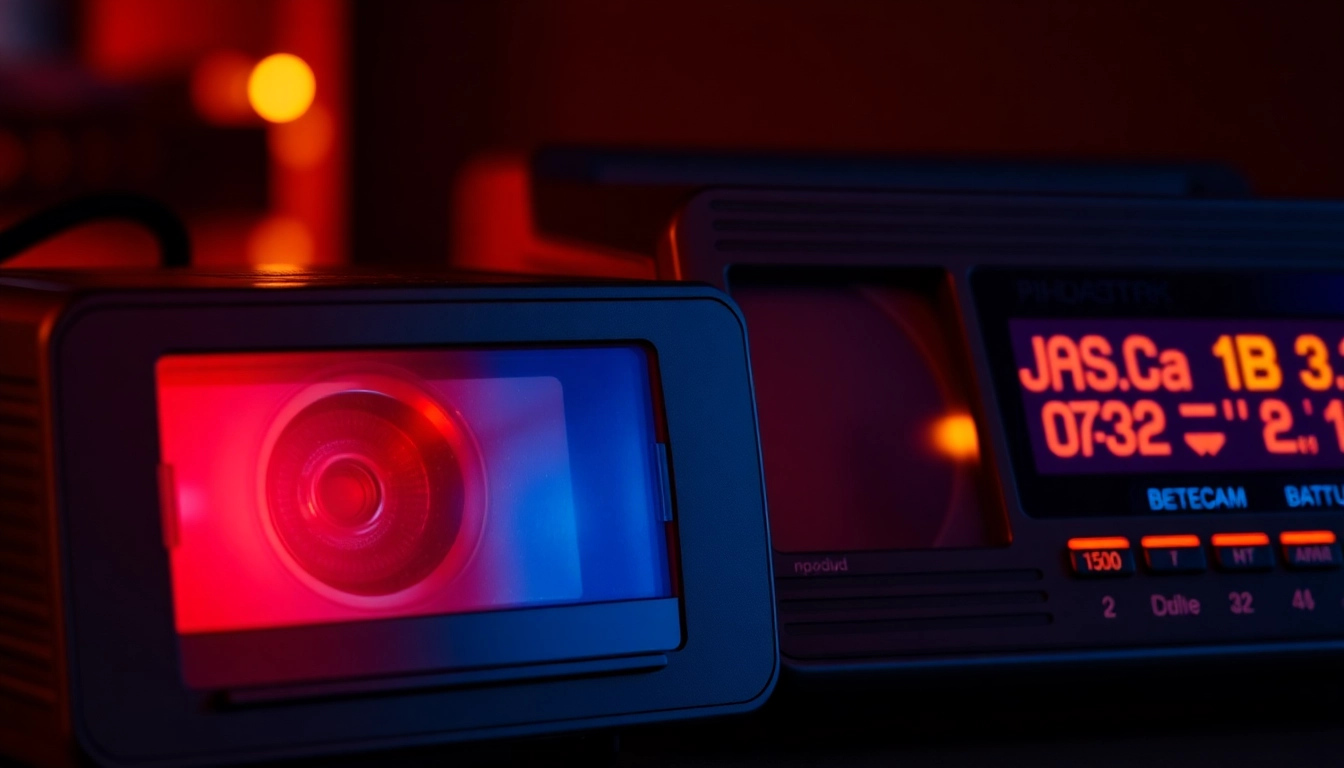Understanding Betacam Tapes and Their Formats
Betacam, introduced by Sony in the early 1980s, revolutionized the video production industry with its high-quality analog recording capabilities. This standard quickly became the preferred choice for broadcasting and professional video production due to its superior image quality over previous formats. However, with technological advancements leading to digital formats, it has become essential to preserve historical video content stored on Betacam tapes by converting them to digital formats. By choosing to Betacam to Digital conversion, users ensure that their valuable footage remains accessible and safe from deteriorating media.
What is Betacam?
Betacam is a professional video format used widely in the television and video production industry. The term “Betacam” encompasses various tape formats developed by Sony, including Betacam, Betacam SP, and Digital Betacam (DigiBeta). These tapes utilize magnetic tape technology to store video and audio signals with exceptional clarity, making them ideal for broadcast and production purposes. Over time, however, the physical medium of Betacam tapes has shown signs of deterioration, and their viability for daily use has declined, making digitization a crucial step for preservation.
The Different Betacam Formats Explained
The Betacam family includes several formats, each designed for specific use cases:
- Betacam: The original format introduced in 1982, offering higher quality than VHS.
- Betacam SP: An enhanced version that supports wider bandwidth and offers better color reproduction.
- Digital Betacam (DigiBeta): Introduced in the 1990s, DigiBeta is a digital format that provides the highest quality of all Betacam formats, with superior audio and video fidelity.
- Betacam SX: A more compact format designed for specific niche markets, offering a good balance between quality and storage efficiency.
Why Transfer Betacam to Digital?
The primary reasons for transferring Betacam tapes to digital formats include the preservation of content quality, ease of access, and protection against the inevitable degradation of physical tapes. Digital files can be saved in various formats, like MP4 or AVI, making them easier to play on modern devices and share. Furthermore, digital storage solutions are typically more durable than tape, significantly reducing the risk of loss due to environmental factors or equipment failure.
The Benefits of Digitizing Betacam Tapes
Quality Preservation During Conversion
One of the greatest advantages of converting Betacam tapes to digital is the potential for quality preservation. Professional digitization services employ high-end VTR (Video Tape Recorder) machines that are designed to capture the video and audio signals at their best quality. This means that the resulting digital files can maintain the original high brightness, contrast, and color accuracy that Betacam tapes were known for. In many cases, additional cleaning and restoration processes during digitization can enhance the footage, eliminating noise and improving image quality beyond what was previously possible on the tape medium.
Accessibility and Convenience of Digital Files
Digital files offer unparalleled accessibility. Instead of searching for specific tapes or relying on aging playback equipment, users can easily access their video content on computers, tablets, or smart TVs. Digital files can also be organized in cloud storage solutions, allowing for secure backups and easy sharing with family, friends, or colleagues. This convenience is particularly beneficial for organizations or professionals who may need to reference historical footage during projects, ensuring critical content is just a click away.
Cost-effective Long-term Storage Solutions
Lastly, storing video files digitally is significantly more cost-effective than maintaining physical tapes. Digital storage solutions such as cloud services or external hard drives require less physical space and present lower risks of damage. Moreover, digital files do not degrade over time as tapes do; provided proper backup measures are in place, the investment in digitization pays off in the longevity and sustainability of video content.
Choosing the Right Service for Betacam to Digital Conversion
Factors to Consider When Selecting a Service
When choosing a service provider for Betacam to digital conversion, several crucial factors should be considered:
- Experience and Expertise: Look for companies specializing in Betacam conversions with proven track records and qualified technicians.
- Technology and Equipment: Ensure the service uses high-end VTR decks and professional-grade digitization equipment for optimal quality.
- Formats Available: Check which digital formats the service can provide, ensuring they meet your specific requirements.
- Security and Privacy: The handling of your tapes should be secure, with guarantees regarding the safeguarding of your media and intellectual property.
- Customer Support: Reliable customer service can make the process smoother, providing assistance before, during, and after the conversion.
Comparing Service Providers: Pros and Cons
Comparison among various service providers can often lead to better decisions. Key aspects to evaluate include:
- Price vs. Quality: While low-cost services might seem attractive, they may not offer the quality desired. Consider the balance between cost and quality to make an informed decision.
- Turnaround Time: Different services will have varied timelines for the completion of the conversion. Gauge how urgently you need the files and choose accordingly.
- Reviews and Reputation: Research service providers by examining reviews and testimonials. Satisfied customers can often indicate a reputable service.
Reviews and Testimonials: Learning from Others
Before selecting a provider, reviewing testimonials or feedback from previous customers provides valuable insights into the quality of service and user satisfaction. Websites and forums can serve as useful resources to evaluate the experiences of others, helping you understand potential challenges and advantages associated with specific services. Choosing a provider with positive reviews can significantly enhance your overall experience during the digitization process.
Step-by-Step Process for Betacam to Digital Transfer
Preparing Your Betacam Tapes for Conversion
Proper preparation of Betacam tapes before the conversion process is essential to ensure the best results:
- Inspect Tapes: Check that the tapes are in good condition with no visible damage, such as mold or warping.
- Label Properly: Clearly label each tape with any relevant information, including content details and dates, to facilitate accurate processing.
- Keep a Record: Maintain a physical or digital record of the tapes you are sending in for conversion. Documenting the information helps track the tapes throughout the conversion process.
What to Expect During the Digitization Process
Understanding what happens during the conversion process can help set expectations. Here are the common steps involved:
- Initial Assessment: The service provider will assess the condition of your tapes and advise if they require restoration or extra care.
- Digitization: The tapes will be played on specialized equipment, capturing audio and video signals directly to digital formats. This process involves careful monitoring to ensure optimal quality.
- Quality Control: Once the conversion is complete, quality control checks will be conducted. Technicians review the digital files to ensure fidelity before returning them to you.
Post-Transfer: How to Store and Share Your Digital Files
Once your Betacam tapes have been successfully converted to digital formats, it’s crucial to store and manage these files appropriately:
- Backup Your Files: Maintain redundant copies of your digital files, ideally in multiple locations or using different storage methods like cloud services and external drives.
- Organize Files: Create a logical filing system that allows for easy retrieval and categorization of content based on theme, date, or any other relevant criteria.
- Consider Sharing Options: Plan how you intend to share the digital files, whether through cloud sharing, email, or physical storage like USB drives.
Future-Proofing Your Video Collection: Best Practices
Maintaining the Quality of Your Digital Files Over Time
While digital files are less prone to degradation than tapes, there are still best practices for maintaining quality over time:
- Use Reliable Formats: Choosing widely supported and efficient digital file formats ensures longevity and easy access. Formats like MP4 or MOV are recommended due to their universal compatibility.
- Regular Checks: Schedule periodic checks of your digital files to ensure they remain intact. This is vital as storage devices can fail.
Backing Up Your Digital Content Effectively
A solid backup strategy is paramount in safeguarding your digital video collection. Consider the following:
- 3-2-1 Backup Rule: Keep three copies of your files, stored on two different types of media, with one copy stored off-site. This method reduces the risk of data loss.
- Automate Backups: Utilize software solutions that automate backup processes, ensuring your files are continuously protected without manual intervention.
Staying Updated with Technology for Future Transfers
Technology continues to evolve, impacting digital formats and storage solutions. To future-proof your video collection:
- Stay Informed: Regularly research emerging technology trends in digital storage, file formats, and video editing tools to ensure you’re leveraging the best available options.
- Plan for Future Transfers: When considering new formats or upgrading your video collection, plan ahead for how best to convert or transfer your content as technology progresses.



